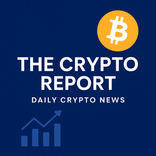Poll: Who owns cryptocurrency? More young people, more men and more Republicans

The Crypto Report
Daily crypto news
The world of digital assets is dynamic, ever-evolving, and sometimes, a little opaque. While headlines often trumpet the latest price surges or market dips, a more fundamental question remains: Who exactly is shaping this financial frontier? Understanding the demographics and motivations behind cryptocurrency adoption is crucial for anyone—from entrepreneurs and investors to policymakers and educators—seeking to navigate or influence this space.
Recent insights from the NBC News Decision Desk Poll, based on August 2025 data, offer a compelling snapshot of who owns crypto and, more importantly, why. These findings reveal distinct patterns that demand attention, painting a clearer picture of the digital asset landscape beyond mere market speculation.
The Current Crypto Landscape: A Niche, But Growing, Audience
Despite its growing prominence, cryptocurrency ownership is still a relatively specialized activity. The poll indicates that only 2% of the adult population regularly owns or trades crypto, with another 11% participating occasionally. However, a significant 21% express interest in entering the market, suggesting substantial latent demand. The remaining two-thirds of adults are currently disengaged, seeing no immediate relevance.
Identifying Early Adopters and Future Growth
For businesses and platforms in the crypto sector, this 21% interested segment represents a vital opportunity. Tailoring accessible educational content and user-friendly onboarding processes could unlock considerable growth by converting curiosity into active participation. Understanding the existing demographic splits helps pinpoint where these efforts will yield the most impact.
Decoding the Demographics: Gender and Political Divides
The poll uncovers pronounced demographic distinctions among crypto holders. A stark gender gap reveals men are significantly more likely than women to own or trade digital assets, with 18% of men compared to just 7% of women.
The Young Male Dominance
This gender disparity is particularly amplified within younger generations. Among men under 30, 20% report crypto ownership, a figure that drops to a mere 6% for women in the same age bracket. This trend continues for the 30-44 age group, where 26% of men engage with crypto versus 13% of women. This consistent pattern underscores a need for targeted initiatives to broaden female engagement in the digital asset economy.
Political Alignments in Digital Assets
Beyond gender, political affiliation also plays a role. Republicans are twice as likely as Democrats to own or trade crypto, with 18% of Republicans compared to 9% of Democrats. This divergence suggests potential implications for policy discussions and how digital assets might be integrated into broader economic and political agendas.
Unpacking Motivations: What Drives Crypto Engagement?
Understanding why people engage with crypto is as critical as knowing who they are. The poll reveals fascinating differences in motivations across various groups.
"Fast Money" vs. "Ease of Entry"
For young men aged 18-29, the primary driver for using cryptocurrency is often the perception of it being a "fast way to make money," cited by 25% of this group, significantly higher than the 15% across the overall adult population. In contrast, young women in the same age group are more drawn to the idea that crypto is "easier to get into than other ways to invest" (32%). This highlights a fundamental difference in risk appetite and investment philosophy.
Education and Accessibility
Educational background also shapes perceptions of accessibility. Individuals with a high school education or less are more likely to view crypto as having a lower barrier to entry (30%) compared to college graduates (19%) or those with postgraduate degrees (16%). This suggests that simplified access and clear, practical guidance are powerful motivators for a substantial segment of potential users.
Actionable Insights for the Digital Future
These detailed demographic and motivational insights provide a robust foundation for strategic planning. For developers and product managers, it means designing interfaces and experiences that cater to diverse needs—whether it’s the thrill of rapid gains or the reassurance of simplicity. For marketers, it implies crafting messages that resonate with specific values, moving beyond generic pitches to address distinct aspirations for wealth generation, financial inclusion, or community belonging.
Policymakers, too, can use this data to inform regulatory frameworks that promote responsible innovation while protecting a diverse user base. By understanding the varying levels of financial literacy and risk tolerance, they can foster an environment that is both secure and equitable.
Embrace Nuance, Drive Progress
The future of digital assets is not monolithic; it’s a tapestry woven from diverse users and their unique motivations. Moving forward, success will belong to those who look beyond broad trends and embrace the nuance of human behavior within this technological revolution. By acknowledging who participates and why, we can collectively build a more inclusive, robust, and understandable digital financial ecosystem. What steps will you take to apply these insights in your sphere?

The Crypto Report
Author bio: Daily crypto news
